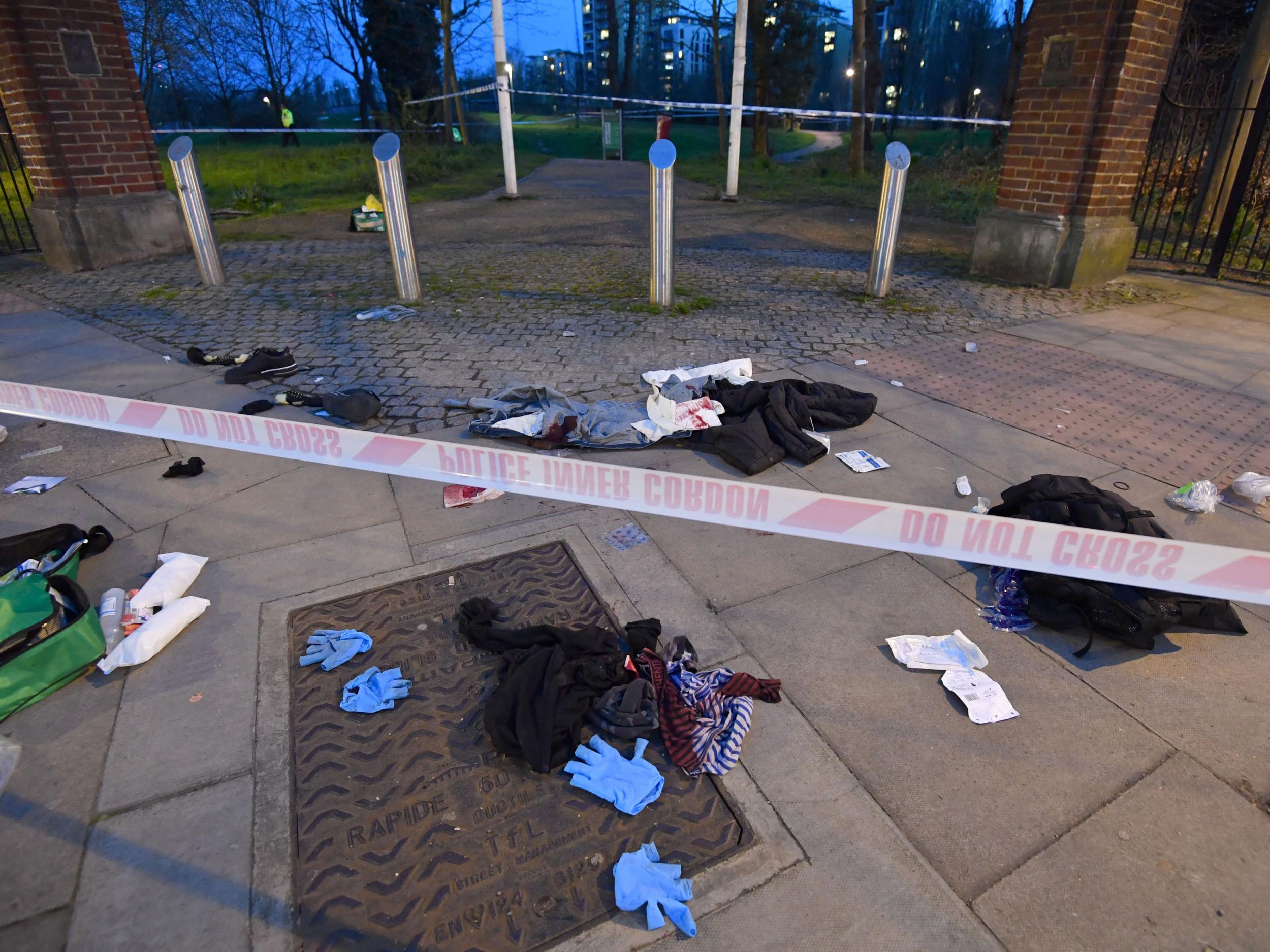Number of children treated for knife injuries soars at four times the rate of general population
Exclusive: Youth workers warn of ‘disturbing’ fall in the age of stab victims

The number of children aged 16 and under treated for stab wounds in hospitals has soared more than 60 per cent in the last five years, highlighting a “disturbing” trend towards younger victims, The Independent can reveal.
NHS figures show the number of stab victims in England aged 10 to 16 rose by 63 per cent between 2011-12 and 2016-17 – four times the rate of increase in the population as a whole.
It comes amid a spate of violence in London involving young people, which has seen 10 teenagers killed since the start of the year alone, seven of them with knives.
An analysis of the most recent data available shows 285 youngsters below 17 were treated for “assaults with a sharp object” in 2016-17, compared with 175 in 2012-13.
The biggest increase was among 15-year-olds, with the number of children this age seen by consultants for knife wounds up by 85 per cent since 2012, from 52 to 96.
These figures mark a considerably starker rise than the overall number of stabbings treated in England, which rose by 14 per cent in the same period, from 3,888 to 4,434.
Tom Isaac, a youth worker who supports stabbing victims at a paediatrics unit in south London, said there had been an “obvious and disturbing” fall in the ages of young people being treated for knife wounds.
Oasis Youth, the service he heads at St Thomas’ Hospital, has seen a spate of referrals this year, with 2018 set to be the busiest year since it began. Last year, the most commonly referred age group was 15 (26 per cent), followed by children aged just 13 (14 per cent).
Mr Isaac said: “We have sadly always seen a regular amount of young people referred to Oasis Youth Support since we started the service back in 2010. However, the last 12 months we have noticed an obvious and disturbing shift in the average ages.
“Two years ago, those who attended our A&E due to stabbings where usually 17 years old and up; now it starts from 15 year olds.”
Ebinehita Iyere, a youth worker in south London, said young people were falling into violence at a younger age in part because they are “getting smarter” due to technology and are able to ”absorb negativity more quickly” from violence going on around them.
“A lot of these children live on estates and in communities that are prone to high levels of policing, and the lack of realisation of the impact on everyone around them,” she said.
“Some of these kids live in households where their parents, uncles, cousins or siblings have been a victim of perpetrator of violence, and many services have failed to holistically support them. Police didn’t help, services didn’t help.
“The thing with this is that when they are younger, they don’t see it as drastic because they react on impulse. It’s a reenactment of what they see everywhere around them, from the games they’re playing to the violence on their estates.”
Rhammel Afflick, who works in the youth sector, said the figures showed that the increase in violence with injury wasn’t just down to improvements in the recording crime, which has often been cited as a reason for increases.
He added: “We’ve always known that young people are more at risk as they reach secondary school age. Concern has been raised repeatedly since the spikes in 2008 and 2009 about the importance of prevention work starting at an early age because of the rises in young people getting involved at a younger age.
“This should serve as a wake-up call. We can’t only be concerned about serious youth violence when it results in death, when we know so many young people are victims of serious attacks from a young age.”
The government has faced questions this week over the recent surge in violent crime, which has resulted in more than 50 killings in London since the start of the year.
Six teenagers were stabbed within 90 minutes in the capital last Thursday, with a 13-year-old boy among the victims of four separate knife attacks. The incidents took place as protesters gathered elsewhere in the capital to demand action to prevent young people dying.
Tottenham MP David Lammy said violence in London was the “worst I’ve ever seen it”, and warned there was “absolutely no sign” of an end to the bloodshed following a spate of murders as drugs drive turf wars between gangs.
The Home Office published its £40m serious violence strategy on Monday, which vowed to tackle violent drugs gangs and introduce prevention incentives, among other pledges.
But Amber Rudd came under fire after the strategy neglected to mention cuts of more than 20,000 police officers since 2010.
The home secretary said she had not seen a leaked Home Office document, which threatened to overshadow the launch of her much-hyped strategy by suggesting police cuts had “likely contributed” to rising violence and “encouraged” offenders.
In a speech about violent crime on Monday, Ms Rudd said: “We need to engage with our young people early and to provide the incentives and credible alternatives that will prevent them from being drawn into crime in the first place. This in my view is the best long-term solution.”
She announced a new £11m Early Intervention Youth Fund to help communities run early intervention and prevention programmes for young people, saying she wanted local communities to be “front and centre of our response to violent crime”.
Subscribe to Independent Premium to bookmark this article
Want to bookmark your favourite articles and stories to read or reference later? Start your Independent Premium subscription today.

Join our commenting forum
Join thought-provoking conversations, follow other Independent readers and see their replies